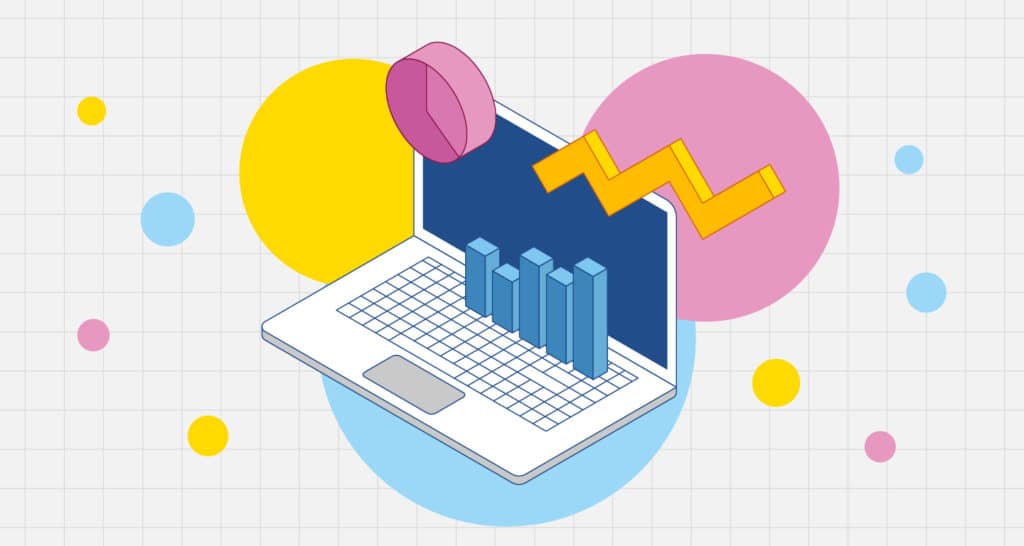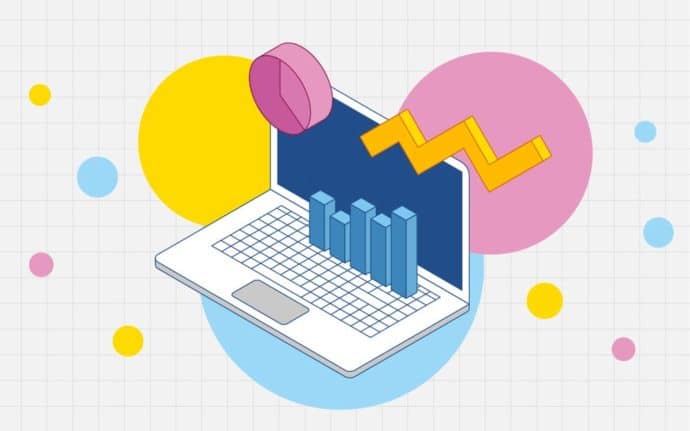There’s plenty of buzz around Google Analytics (GA) – and for good reason. It’s a powerful tool that can provide you with a solid understanding of what it is your users are doing on your site. But there’s a lot more to it than that, and many brands are missing out on the more sophisticated tricks GA has to offer – including advanced segmentation.
When used in conjunction with other research methods, Google’s advanced segmentation can provide your business with a very clear picture of user behaviours and patterns. By understanding these additional capabilities of Google Analytics, you’ll be able to draw far more valuable insights into user experiences and identify many more opportunities for growth.
As a UX researcher and data analyst, segments are definitely one of the more advanced features in my daily go-to list. In the next few minutes, I’ll walk you through how and why to use them in your digital marketing.
Here are the key things you need to know:
What Is A Segment?
A segment is a subset of your Google Analytics data. For example, returning users visiting the website on mobile devices, or mobile users from social channels such as Facebook and Instagram. Segments allow you to track and compare online user behaviour, which is especially useful when it comes to A/B testing.
GA’s advanced segments allow you to customise and filter reports in a highly customised way in order to find the detailed insights you need, from demographics, to technology, to behaviours, to traffic sources.
Let’s use ecommerce as an example. An ecommerce business might use segments to identify that voice assistant users are the top-converting customers, which could then build the case for voice search optimisation in order to better cater to these specific users.
How Many Types Of Segments Are There?
There are three segment types (or scopes), including subsets of:
- Users
- Sessions
- Hits
If you are not familiar with these terms, below is how Google Analytics defines them:
- Users – The number of users who interact with your property (i.e. your website or app)
- Sessions – Multiple interactions by a single user are grouped into sessions.
- Hits – Interactions during a session are referred to as hits. Hits include interactions like pageviews, events and transactions.
A single user can generate one or multiple sessions, and each session can have many hits. Below is a way to visualise this:
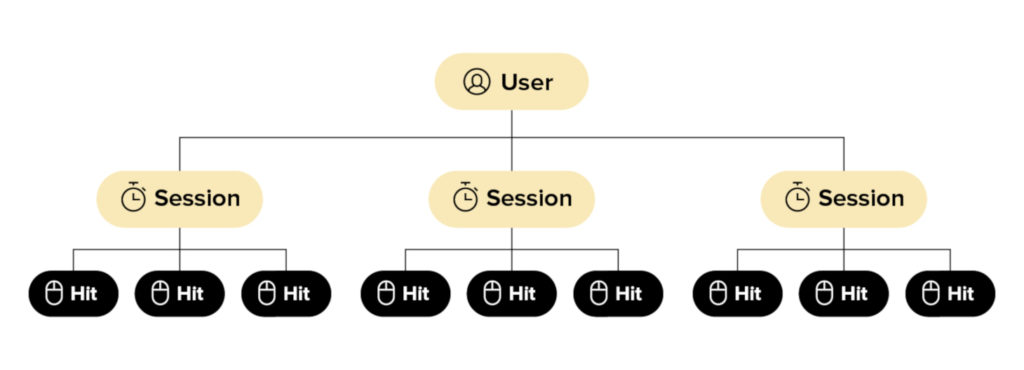
Users are the most frequently-used measurement, but depending on your goal you can specify the segment scope accordingly.
How Do I Create An Advanced Segment?
To start using advanced segments, you’ll need to click on the dropdown arrow next to the default ‘All Users’ view.
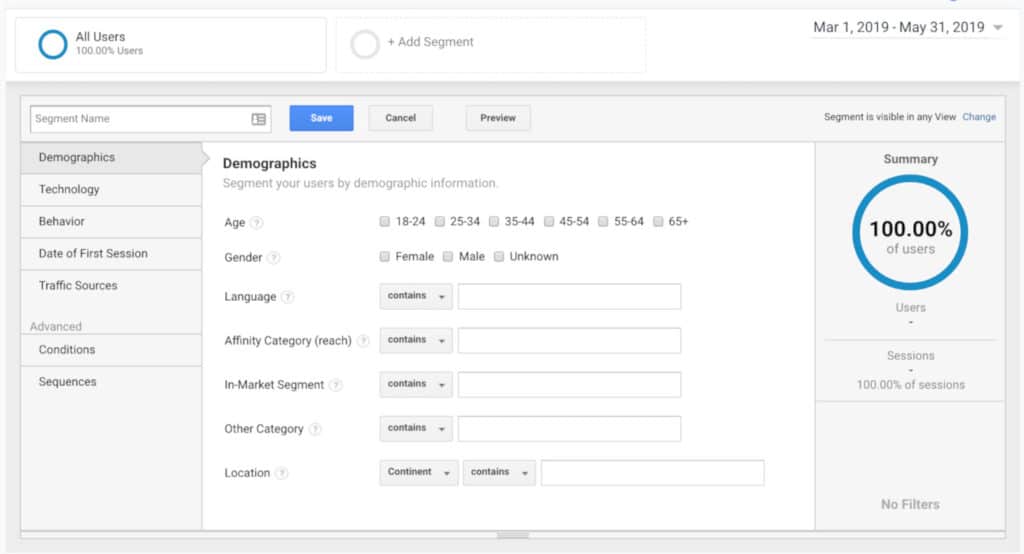
- Click on the “+ Add Segment” box right next to ‘All Users’ to bring up the segment builder.
- Name the segment.
- Select the filter for the segment you want to create and specify the conditions that constitute that segment. They can vary from demographics, to devices, to traffic sources, and so on.
- Check the summary data on the right of the segment builder to ensure this data subset is large enough for further analysis.
- Click “Save”.
Easy peasy lemon squeezy!
Why Should I Use Advanced Segments?
By default, the data you see across all reports in Google Analytics is based on data from ‘All Users’. With advanced segments, you can analyse the behavioural data of a particular subset across multiple reports, explore a specific user flow, or make a meaningful comparison between different groups of users.
For example, if you’re interested in knowing how users who found the site on desktop devices via organic search perform compared with all users, then advanced segments will allow you to do that. But further to that, it’ll also give you data on their age, gender, what pages they viewed, and the list continues.
The screenshots below demonstrate the kind of insights you can expect after applying an advanced segment:
- There are two active segments here – ‘All Users’ and ‘Desktop’ users from who’ve come via organic search.
- The latter accounts for a significant amount of all website traffic (52%). When compared with all website visitors, these users are slightly less likely to bounce and spend more time on the site.
- Within the latter segment, male users convert 2.8x worse than female users. This gap is significantly bigger when compared with all users (1.6x).
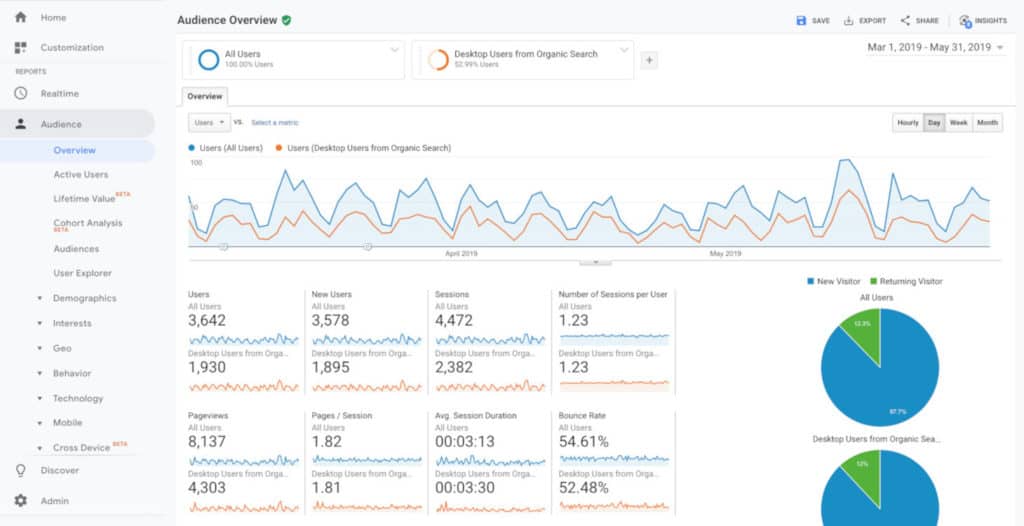

What Are Some Frequently Used Segments?
If you are new to this feature and don’t know where to start, I recommend you create and play around with segments by:
- Device type (e.g. desktop only)
- User type (e.g. new users vs returning users)
- Traffic source (e.g. organic, paid search, social)
- Demographic group (e.g. male users between 25-34)
- Landing page (e.g. users landing on the homepage in particular)
These are all important data points worth tracking and frequently reviewing in Google Analytics. By comparing behaviours between subsets at a much deeper level (such as mobile vs desktop) you can uncover some pretty interesting insights that aren’t available in standard GA reports.
Better Understanding For Better Decision-Making
Getting familiar with a tool like GA’s advanced segments will give you a better understanding of the specific subset data and customer behaviour you’re interested in, delivering more meaningful and actionable insights to drive better decision-making in relation to your digital marketing strategy. You can even use advanced segments to isolate potential UX issues that a particular group of users are facing, or do a deep-dive into the behaviour of users coming from your various traffic sources so you can better optimise their performance.
Take some time to explore the segment builder and try them out yourself – you’ll be surprised at what you might find!
If you’re interested in exploring more ways to make the most of your data, get in touch with the team at Yoghurt Digital today.
